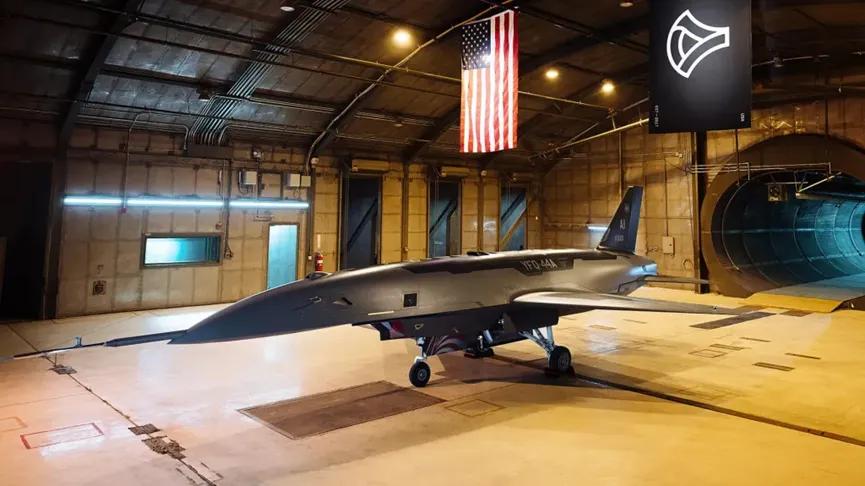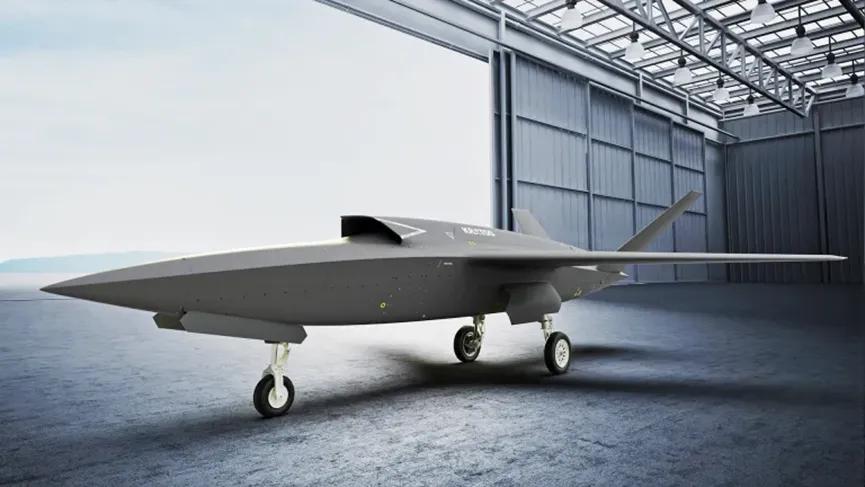Author: Hongshe Kursk
The military parade for the 80th anniversary of the victory of China's War of Resistance Against Japan has far-reaching impact on the global defense market. With the unveiling and service of various new weapons and equipment, many countries have realized the gap with China's scientific and technological level.
Although there are also jealously saying that China's weapons and equipment did not meet the European standards, like the former European defense ministers, all countries have accelerated their originally slowly depressed defense plans, and the United States is the most active.
Recently, while continuing to promote the Boeing MQ-25 "Stingray" carrier-based unmanned tanker project, the U.S. Navy signed a contract with Andurier, Boeing, General Atomics, Lockheed Martin and Northrop Grumman to purchase new carrier-based cooperative unmanned fighter jets (CCA), instead of taking a wait-and-see attitude towards unmanned fighters as in the past. Obviously, the US Navy's decision was shocked by the two drones and two drone fighters displayed by China, and quickly adjusted its strategy.

Picture: China's new generation of unmanned fighter jets.
According to a briefing slide from the Executive Office of the U.S. Naval Aviation Systems Command (NAVAIR) UAV and Strike Weapons Program (PEO U&W) obtained by the War Zone (TWZ) website, the company is already signing a "conceptual" design contract for CCA drones. The slide was approved for full public release on August 20 this year.
From the information on the slide, the CCA drone will have the following characteristics:
1. Unmanned driving, modular, interoperable, interchangeable, multi-functional platform;
2. The lasting, deadly, agile force multiplier;
3.Aircraft carrier combat capability;
4. Cost-effectiveness and task effectiveness;
5.Maximize operational flexibility;
6. Solve current and emerging technological gaps;
7.Adapting to high-risk situations;
8. Reduce the combat risks of manned air platforms;
9. Supports fourth and fifth generation fighters and is able to cooperate with sixth generation fighters.

Picture: The U.S. Air Force asked Andurier to design and develop the YFQ-44A drone.
The US Navy has carefully considered the issue of carrier-based drones and has achieved certain results.
As more than ten years ago, the US Navy developed the X-47B flying wing stealth unmanned attack aircraft, with a length of 11.63 meters, a wingspan of 18.02 meters, a folded wing of 9.41 meters, an empty weight of 6.35 tons, a maximum take-off weight of 20 tons, a combat radius of 1,500 kilometers, and two bomb bays that can carry 2,000 pounds of JDAM.
From November 26, 2012 to May 22, 2015, the X-47B drone completed catapult takeoff, touching ship resumption, stopping landing, autonomous take-off, and air refueling on the aircraft carrier, but the US Navy finally decided to give up the X-47B project and transfer it to technical reserves.
The main reason is that the X-47B is a traditional detection and strike drone. Although it has a stealth design, its main combat method is to accurately strike ground or maritime targets without air combat capabilities. But this cannot be blamed on the X-47B, because under the technical conditions at that time, the main function of drones was to ground/sea attacks, and their autonomous control capabilities were not enough to deal with fleeting aerial combat scenarios.

Picture: The US Navy dismounted X-47B stealth carrier-based drone.
When the technical conditions are not yet mature, the US Navy mainly spends its energy on the relatively low-difficulty MQ-25 "Stingray" refueling drones.
In the impression of the X-47B, China has also launched a number of attack drone projects with flying wing layout. The most significant effect is the Attack-11 drone, which has appeared in both military parades. It is also rumored that it will be used soon, and will be equipped with domestic aircraft carriers and amphibious assault ships.
At the same time, China has not stopped developing air combat drones, and the concept of "loyal wingman" in the US Air Force has received attention in China. The Chinese version of the "loyal wingman" project of various styles was unveiled at the Zhuhai Air Show. At that time, international media judged that China's self-use "loyal wingman" would be more advanced. When the J-20S two-seat stealth fighter emerged, the outside world had already speculated that China had successfully developed an air combat drone that cooperated with the J-20S fighter. This time, we showed two "loyal wingmen" for ground strikes and two "loyal wingmen" for air combat, which further enriched the style of our army's manned/unmanned coordinated combat, which was extremely impactful and deterrent.

Picture: China exhibits two "loyal wingman" in air combat with different shapes.
The US Air Force and Navy were really anxious when they saw this and began to speed up the progress of their own air combat drone projects.
It is worth noting that Andurier and General Atomics, which signed with the U.S. Navy, are already developing prototype designs for the U.S. Air Force's CCA project first phase (i.e., incremental 1).
Just last week, General Atomics' YFQ-42A announced that it had begun test flights. Andurier has previously stated that its YFQ-44A will also be launched soon.

Picture: General Atomics' YFQ-42A drone.
The equipment displayed at the Chinese military parade is all active equipment.
From the complete status of Chinese unmanned fighters, their maturity is much higher than that of the YFQ-42A and YFQ-44A drones that are still in the prototype, and the size is much larger, which means that China's unmanned fighters already have practical combat capabilities, while these two prototypes from the United States are only test products. At the same time, judging from the aerodynamic layout of these two American drones, they are still mainly ground attacks, and the intake duct settings and wing shapes are not very suitable for maneuvering and flexible aerial combat. To sum up, there is still a long way to go to achieve practical combat capabilities.

Picture: The YFQ-42A (left) is a MQ-9C (middle) and MQ-45 (right) drones are together. It can be seen that the size of the YFQ-42A drone is very small.
With unmanned fighter jets, there are also manned fighters that can operate them. China uses the J-20S two-seater drone to develop the J-20 fighter. The officers of the rear-seat weapon system can control the drone that cooperates with it. Both the J-20S and the drone adopt a highly stealth design, so it can form a situation where 1+1, 1+2, and 1+N are greater than 1.
The F-35C stealth fighter on the deck of the US Navy aircraft carrier adopts a single-seat layout. Fighter pilots have to operate their own aircraft while also controlling drones for combat. Obviously, the pressure is very high and the effect is very poor. Although the two-seater F/A-18F fighter can be equipped with a drone control system in the rear seat and operated by the weapon system officer, the aircraft is a fourth-generation non-stealth fighter, and the performance gap between it and the fifth-generation fighter is obvious. Moreover, the addition of non-stealth fighter adds the risk of detecting combat operations, and even the F/A-18F that controls the drone is shot down by the opponent's long-range air-to-air missile.
So, in the future, whether it is air combat or war, it will rely on system combat. Without hardware support, it will be difficult to form a combat system that can effectively respond to threats. The combat strength of these American drones is difficult to fully utilize.

Picture: The future sea battlefield may be played by drones!














